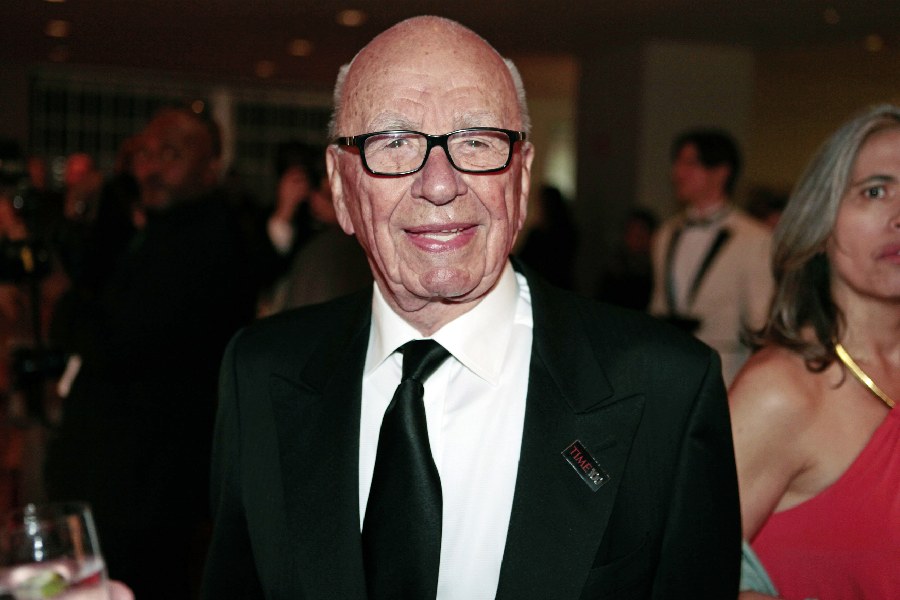Rupert Murdoch, the 92-year-old media tycoon who announced his retirement on Thursday, spent the past 70 years building a global media empire that gave him influence in journalism, politics and pop culture.
Over dozens of acquisitions, Murdoch created a media conglomerate known for the rise of the modern tabloid and conservative commentary. His tenure has not been without scandal: One of his properties in Britain folded in 2011 after a phone-hacking inquiry, and he admitted this year that Fox News had spread falsehoods about the 2020 U.S. presidential election.
Here’s how Murdoch built his empire:
1950s
The Australian-born mogul ventured into media in 1952 when he inherited his family’s business after the death of his father, Keith Murdoch. A 21-year-old Oxford student, he inherited The News of Adelaide, a newspaper in southern Australia with a circulation of 75,000.
1960s
Rupert Murdoch bought several local newspapers in Australia in the 1960s, including The Sunday Times in Perth and The Daily Mirror in Sydney. In 1964, he founded The Australian, a national newspaper.
In 1969, he stepped into the British media market, buying The News of the World and The Sun.
1970s
Murdoch, through his media company, News Corp, moved into the U.S. media market in 1973 with the purchase of The San Antonio Express and The San Antonio News, which he no longer owns. In 1976, he bought The New York Post, which he sold in 1988 and then reacquired in 1993.
1980s
Murdoch acquired The Times and The Sunday Times in Britain in 1981, controlling a bigger chunk of the British media market.
In 1985, he acquired 20th Century-Fox, a movie studio. By 1986, he had launched Fox, a broadcast network that would run shows that became TV classics, like “The Simpsons” and “The X-Files.”
In 1986, Murdoch abruptly moved the offices of his British newspapers to a site where printing would be done with less labor-intensive technology. More than 5,000 printing and production workers who called a strike in protest were dismissed, in a bitter dispute seen as a turning point in the balance of power between unions and employers in Britain.
In 1987, News Corp bought Harper & Row, which would become HarperCollins in 1990 after it merged with William Collins, another publisher Murdoch had investments in.
In 1988, Murdoch founded Sky Television in Britain. The next year, the network started Sky News, a cable-TV news channel.
1990s
In 1995, News Corp established a broadcast company, Foxtel, in Australia. It launched Sky News Australia in 1996.
In 1996, Murdoch started the Fox News cable channel alongside Roger E. Ailes, a former media adviser for Presidents Richard Nixon and George H.W. Bush. Fox News became a hallmark for conservative TV commentary, bolstering the careers of hosts like Bill O’Reilly, Glenn Beck, Tucker Carlson and Megyn Kelly.
2000s
Murdoch bought Intermix media, the parent company of Myspace, for $580 million in 2005. Myspace, which struggled to keep up with other social media competitors, was sold six years later for $35 million.
In 2007, Murdoch acquired The Wall Street Journal’s parent company, Dow Jones & Co., for $5 billion. Shortly after the acquisition, there was a leadership shuffle among The Journal’s editorial staff, and its new owner pushed for more coverage of politics.
2010s
James Murdoch, one of Rupert Murdoch’s sons, was named News Corp’s deputy chief operating officer in 2011. That same year, he became engulfed in a phone hacking scandal that led to the shutdown of The News of the World.
In 2012, Rupert Murdoch split his newspaper business and entertainment business into two separate entities: News Corp and 20th Century Fox. He considered remerging them, but those plans were dropped this year.
In 2018, Murdoch’s elder son, Lachlan Murdoch, was named chief executive of Fox Corp, the media empire’s TV arm.
The Walt Disney Co. acquired most of 21st Century Fox’s assets in a $71.3 billion deal in 2019, taking over Murdoch’s entertainment business. The remaining broadcast business now falls under a new entity, Fox Corp.
2020s
James Murdoch resigned from News Corp in 2020 because of “disagreements over certain editorial content published by the Company’s news outlets and certain other strategic decisions.”
Rupert Murdoch was deposed in 2023 in Dominion Voting Systems’ lawsuit over Fox News’ coverage of allegations of fraud in the 2020 presidential election, and he acknowledged that the network had endorsed false statements. The network settled the landmark defamation case for $787.5 million in April.
In September 2023, Murdoch leaves the reins of Fox and News Corp to Lachlan Murdoch. The elder Murdoch remains chair emeritus of the two companies.
The New York Times News Service










